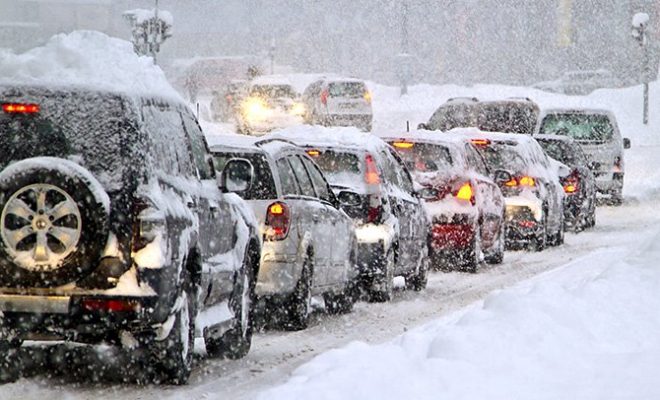10 Easy Tips for Driving Safer This Winter

Even the best drivers struggle with winter weather conditions. Ice on the roads can result in worse traction for your vehicle, making it harder to come to a complete stop or control your vehicle. Snow can reduce your visibility and pile up on the ground, making it possible for your car to get stuck or lose control. And colder temperatures can affect how your vehicle runs—as well as your windshield’s visibility in some cases.
You may think you’re a perfectly capable driver, but remember, hazardous road conditions are one of the main causes of car accidents. And even if you drive reasonably well, you still have to consider the accidents that unfold because of another driver’s neglect.
Fortunately, there are some easy ways you can improve your driving safety in winter, which can cancel out many of the season’s harmful components.
Improving Your Winter Driving
These tips are some of the most important for driving safely this winter:
- Avoid the worst weather conditions. First, be aware that while a bit of snowfall won’t increase the odds of a traffic collision by much, a blizzard could skyrocket those odds. If there’s a lot of snow, ice, wind, and other problematic conditions, it’s in your best interest to stay home. Don’t go out unless you absolutely have to, and consider staying overnight wherever you are.
- Be aware of low-visibility conditions. Visibility can be a killer in winter, so pay extra attention when visibility is low. Keep your headlights on (but not your high-beams), and in especially low-visibility conditions, consider keeping your hazard lights on. Remember, visibility isn’t just about what you can see—it’s also about what other drivers can see.
- Drive slower. This should be a no-brainer, but drive slower than usual in wintry conditions. This will help you retain more control over your vehicle and give you more time to react to unexpected changes in your environment, such as a swerving car in front of you, or a hidden patch of ice.
- Increase following distance. For the same reason, increase your following distance. Adding a car length or two of following distance can ensure your brakes have enough time to come to a complete stop when necessary.
- Accelerate more slowly. Accelerating too quickly can cause you to lose control of your vehicle. Instead, keep a slow, steady rate of acceleration to your desired speed.
- Go easy on the brakes. Decelerating can also be a problem. If you slam your foot on the brakes to come to a quick stop, it can result in a loss of traction and control. It’s better to apply firm, controlled pressure to your brakes, and repeatedly tap them rather than slamming them once if you don’t have anti-lock brakes on your vehicle.
- Learn how to turn into a skid. Once you enter a skid, you have one good chance to recover—turning into the skid in a controlled manner. The only reliable way to learn this skill is to practice it, so consider intentionally getting into low-speed skids in an open parking lot so you can learn how to handle your vehicle when it encounters one for real.
- Always keep your gas tank reasonably filled. Keeping your gas tank more than half full will help you resist the possibility of a gas line freeze. Plus, you may need the extra fuel to keep warm if you’re involved in a collision and/or stranded.
- Be cautious when going up hills. Hills are especially dangerous during icy conditions. When possible, build a bit of extra speed going into the hill, and keep that momentum going all the way to the top; you don’t want to lose momentum or stop halfway up and come sliding back down.
- Keep an emergency kit in your car. It’s a good idea to have an emergency kit in your car at all times, just in case you’re involved in an accident despite your adept winter driving. Your kit should include items that can help your car out of a dangerous spot, such as a shovel, a pocket knife, jumper cables, and kitty litter (or some other way to get more traction on the snow and ice). It should also contain items to improve your visibility, such as a flares and reflectors. And because winter conditions can be hard enough to delay rescue, you should also have survival supplies, such as extra water, food, clothing items, an extra phone charger, and a first aid kit.
Doing What You Can
There are other ways to make your winter driving even safer, such as upgrading to a four-wheel drive vehicle, or changing out your tires for snow tires, but these tips are designed to be approachable and reasonable for any driver facing the harsh conditions of winter. A bit of practice, a bit of preparation, and a few small adjustments to your driving style could be all it takes to prevent a major accident this winter.












